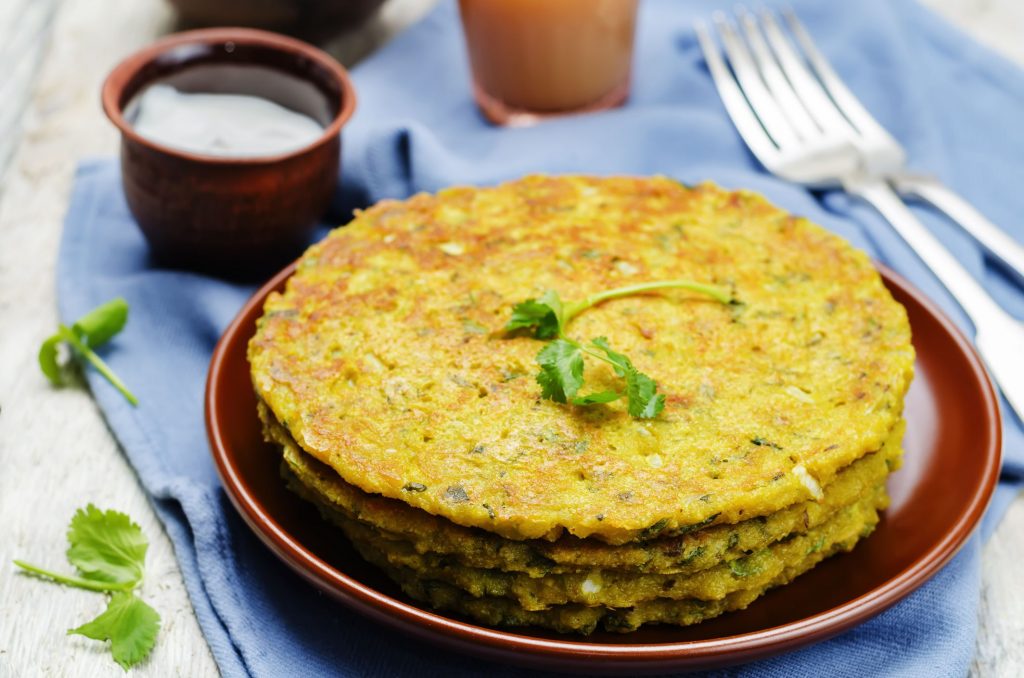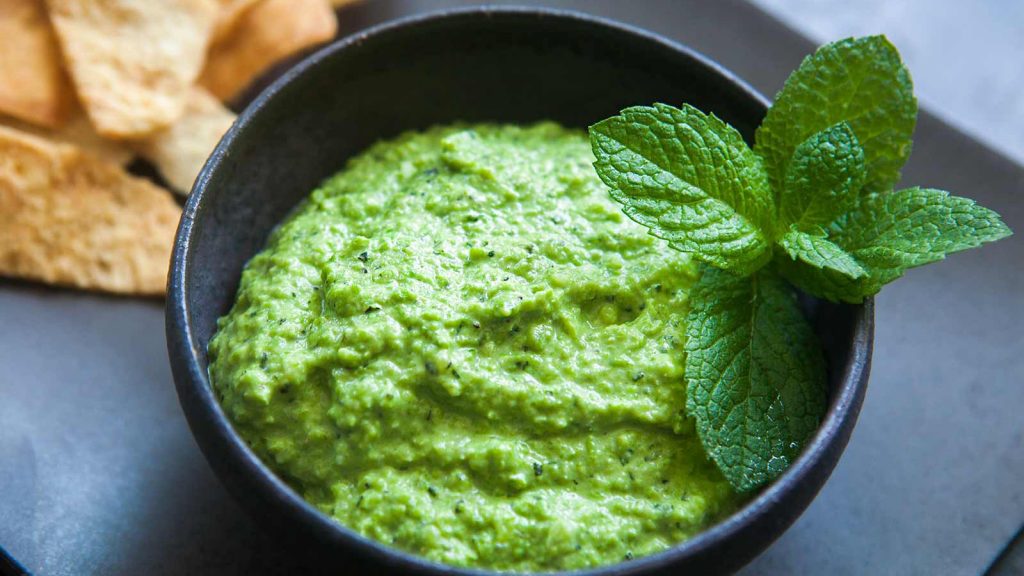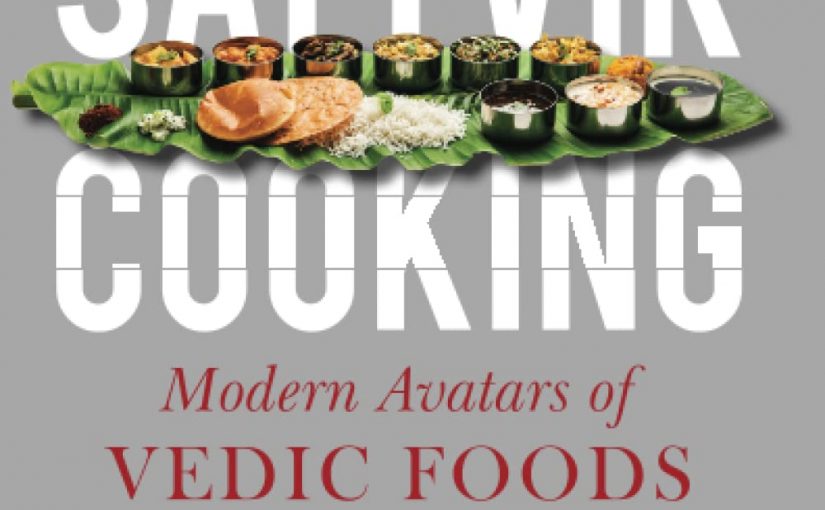HANSAJI J Yogendra’s recently out cookbook titled “Sattvik Cooking, Modern Avtars of Vedic Foods” published by Rup Publications India is a softcover priced at Rs395 and if you’re seeking better health parameters I would advise you to invest in it. Because the more one listens to the real modern gurus of today’s times from the countries of the west and east the more one is convinced that food is medicine.
The ancient traditional systems of preventive healthcare also offer treatments for a host of degenerative health issues – but best of all much of it based on natural remedies enshrined in herbs and a vast cornucopia of vegetables, fruit, grains, seeds and nuts, judiciously combined for maximum gain vis-à-vis fighting fit health. Today’s message going out loud and clear is that we understand the systems by which the body works perfectly and what it needs by way of fuel in the form of food we put in our mouth. Most of us need a handful of food to stay alive but what is in that handful is of the essence.
Hansaji J Yogendra of The Yoga Institute in Santa Cruz East) in the Mumbai suburbia has played a vital role over the years in educating hundreds and thousands of students about the primaries, secondary tertiary principles of healthcare from the roots, that is inside out. Ayurveda is a whole and holistic science and the more we study it the more we know our own prakriti (constitution) and what ails it and how we may make amends through eating and drinking habits and the kind of exercise regime we are devoted for a healthy, happy lifestyle.
What we put in our mouth is so vital to health that it’s a pity mainstream Allopathy healthcare pays scant respect for it! Never mind that the father of modern medicine Hippocrates did say “Let food be your medicine!” Well, in Ayurveda “aahar” is well-detailed vis-à-vis our individual constitution (be it of kapha, pitta and vata or a mixed blend with one or the other dominating)…and what food may create the re-balance your body needs to be on the top of the world again or so speak.
If our health problems are rooted in various nutrients then it follows that the solutions also lie in the quality of the food we eat. Hansaji J Yogendra book painstakingly, exhaustively and repetitively puts together a host of timeless as well as innovative recipes, so that in the eating we may re-fuel energy levels, rectify nutritional deficiencies and heal the body anew. Get introduced to sattvik styles of cooking in this invaluable book – in Ayurveda we know food is defined as sattvik, rajasik and tamasik and eaten in balanced ways so that one may live a long, healthy life.
But when body beautiful is in trouble (courtesy all the lifeless modern industrial junk foods we stuff ourselves with morning, noon and night) it is back to sattvik or pure vegetarian cooking to recover grace and this book offers an in-depth perspective on Aurveda and the yogic sattvik ahar or diet, along with their significance with respect to modern evidence-based nutrition science. Here is your book for learn or re-learn how to eat (in case you have forgotten!) “as per the Ayurvedic clock and calendar, laying emphasis on ritucharya or seasonal recommendations on diet and lifestyle, and dincharya or the disciplined daily routine.”
It’s all about Vedic eating decoded in a way we may understand it better – and the six tastes which effect body beautiful to maintain homeostasis in mind and body, heart and soul.
Editor and compiler Naaznin Husein in her Introduction puts it perfectly when she concludes that “this book echoes that food is divinity. The Annabrahma significantly emphasizes the concept From the food we come, we grow and we become.’ The concept of krutagyata lays emphasis on the attitude and gratitude of the eater.”
Most everything you need to know about eating the Ayurveda or Vedic way is here, well defined and simplified; plus, there are interesting titbits of insight which only Hansaben with her years of experience as a yoga and Ayurveda teacher can offer. For example, while defining sattvik, rajasic and tamasic food she notes that fish and eggs are rajasic foods but “People residing in the coastal regions of India regard fish to be a fruit of the ocean and consider it sattvik.” She quotes from the Bhagavad Gita and other master Sanskrit texts as the Charak Samhita to illustrate insightful observations and Chapter 2 (Know Your Body: The Ayurveda Guide) offers a primer to understanding your body and its constitution – it’s the key to understanding your body which is exclusive only to you,l for no bodily constitution is the same as another in Ayurveda.
Make no mistake this is primarily a book of sattvik recipes, each recipe exhaustively dealt with in depth, something quite extraordinary in a cookbook. You get to know your recipe inside out or so to speak! All recipes come with a calarie count chart and not all are strictly traditional recipes as we know them but have creative touches in modern ways. All define themselves as sattvik and presumably digest easily in peak health or in poor health.
The various chapters are titled “Ritucharya,” “Health Boosters,” “Decoding Food: The Vedic Way,” “The Mind-Body Connection,” “Food is Divinity, Myths and Facts”….Hansaben pretty much gives us a total picture of how we may and should eat from A to Z to reap digestive harmony and also to live in harmony with Mother Earth by respecting the food She offers us without fear or favour – never mind how busy our mod con civilization is currently in destroying our primary home, the good finite earth!
You need thisSattvic Cooking’ if you’re chasing health desperately these days…enlighten yourself first with Hansaji J Yogendra’s wonderful gift of a book for today’s times.
—Reviewed by Pankajbala R Patel
SELECTED RECIPES FROM `SATTVIK COOKING’ BY HANSAJI J YOGENDRA….
PANCAKE/CHILA

Munchy green protein mung dal chila
A nourishing version of savoury pancakes with fresh green leaves and protein rich Sattvik mung dal.
Skill level: Easy; Serving size: 4; Place of origin: India
Season most suited for consumption: All seasons. Rich in nutrients: Potassium, Fiber, Calcium, Iron, Magnesium, Phosphorus, Vitamin C
Know your nutrition
• Green gram (mung): It is a plant-based source of protein, ideal for vegetarians and vegans. It is also a source of zinc, folate and copper. Sprouting the gram increases the amount of Vitamin C by three times. This helps in defending against several chronic, age-related diseases. It is helpful in weight loss as it is low in fat and has dietary fiber.
• Coriander (dhania): It reduces cholesterol deposition by lowering cholesterol levels and blood sugar. It is good for digestion s it contains high insoluble fiber and reduces urinary tract infection. It is rich in vitamin c, vitamin K and antioxidants. It also has the ability to ease muscle spasms and flatulence.
• Groundnut oil (sindana/mungfali ka tel): It has vitamin E that protects from oxidative damage and reduces the risk of heart disease, cholesterol and maintains skin health. It is rich in omega-9 and omega-6 fatty acids and polyphenols like resveratrol that helps to maintain blood pressure, improves immune health, lowers Alzheimer’s disease and prevents cancer.
Favourable for conditions: Weight loss, Anemia, Diabetes, Hypertension, Cardiac Health, Constipation
INGREDIENTS:
Mung dal, soaked for 3 hours, 250gm; coriander leaves, few; ginger, 1 inch; groundnut oil, 1 tbsp; salt, half tsp
METHOD:
Grind soaked mung dal into a smooth paste. Add coriander and ginger and grind one more time in the blender to get a bright green color and smooth paste. Mix well and make it as a dosa batter consistency. Coat the tawa with a layer of oil. Take a small portion of the batter and pour it on the hot tawa and let it cook one side. Gently flip when one side has browned. Serve with chutney of your choice.
Healthy cooking tips: Wash mung dal well and discard the water. Discarding water may reduce bloating and can also reduce uric acid levels. Do not sieve besan for the recipe. Groundnut oil is a good source of monounsaturated fat (MUFA), so it is a healthier cooking oil.
GREEN PEAS AND HUMMUS CHUTNEY

Delicious Middle Eastern hummus with the freshness of mint leaves and peas
Skill level: easy; Serving size: 1; Place of origin: Middle Eastern regions; season most suited: All seasons: Rich in nutrients: Vitamin K and C, Phosphorous, Folate, Vitamin B complex, and Zinc.
Know your nutrition
Chickpea (Chole): it is a plant-based source of protein, ideal for vegetarians and vegans. It is a source of zinc, folate , and copper, it increases satiety and helps with weight loss. It helps to control blood sugar levels and also improves digestion.
Mint (Pudina): It gives a cooling effect, aids in digestion since it is rich in fiber, and relieves nausea as it contains rosmarinic acid. It is rich in vitamin C and iron; hence it has antibacterial, antifungal and antiviral proteins that can prevent infections and fight harmful microorganisms as it boosts the immune system. It is widely used to treat headache, muscle pain (since it is rich in vitamin D and calcium) and respiratory issues.
Green peas: These are one of the best plant-based sources of protein, which is a major reason why they are so filling. Because of their high amount of fiber, they reduce appetite and promote healthy minerals such as magnesium, potassium and calcium and even regulate blood sugar levels.
Favourable for conditions: Weight loss, Anemia, Diabetes, Children, Adolescents, Bones and Muscle Health
INGREDIENTS:
Mint leaves, 20; green peas, 50gm; chickpeas, 30gm; sesame seeds, 15 gm; salt, quarter tsp; lemon juice, 1 tbsp; olive oil, 1 tsp; cumin, 1 tsp.
METHOD:
Take the chickpeas and water in a bowl and soak overnight. Next day boil chickpeas in a pressure cooker for 15 to 20 minutes. After it has cooled down, mash them and make a puree in a blender. Take green peas in a bowl and make a puree of the same with mint leaves in a separate blender. Add sesame seeds, lemon juice, cumin, olive oil and salt in a bowl and mix well. In a separate bowl, add chickpeas puree, peas puree and sesame mixture and mix them well. The hummus is ready to serve.
Healthy cooking tips: Use raw green peas, especially for dips. Do not boil them. Use fresh mint leaves.
